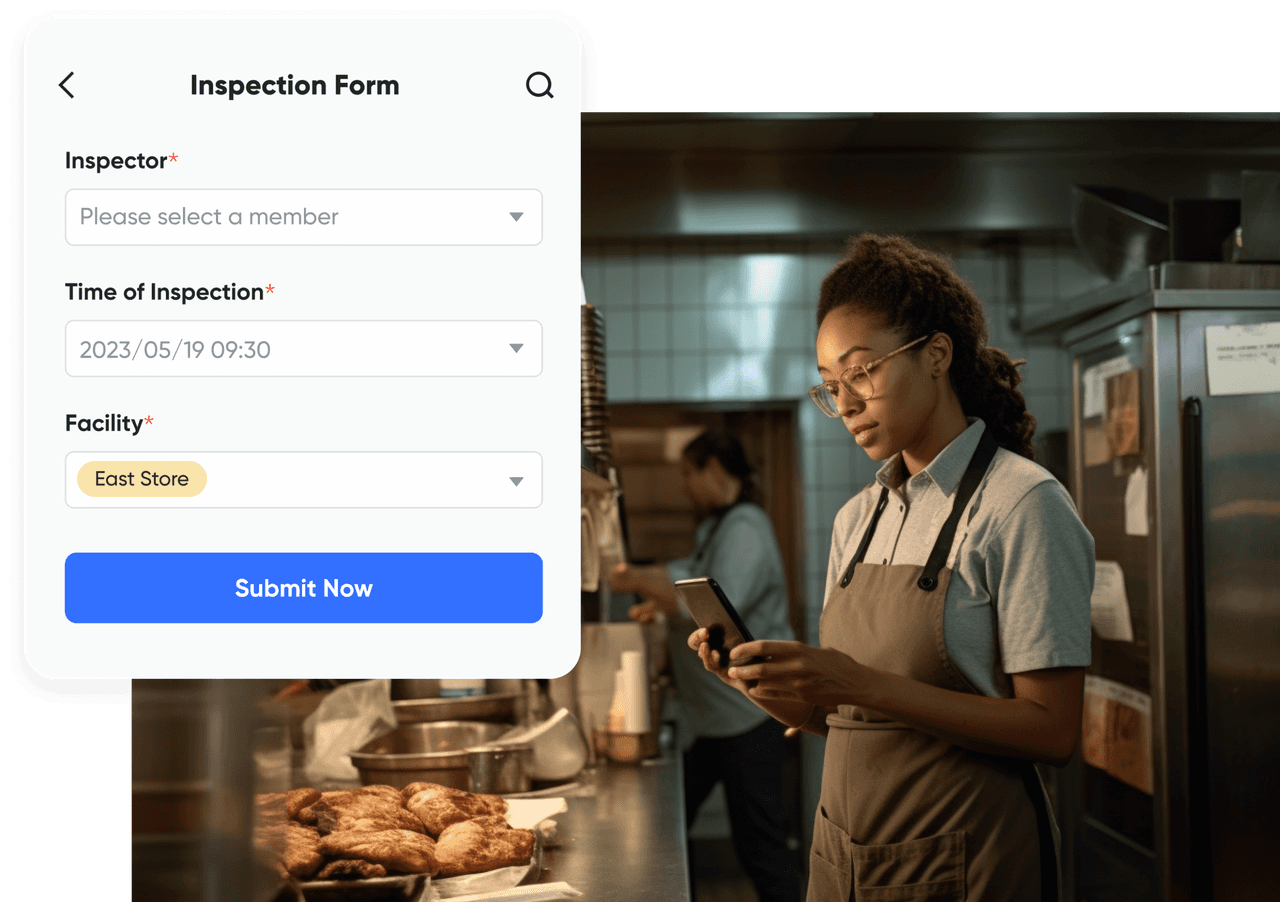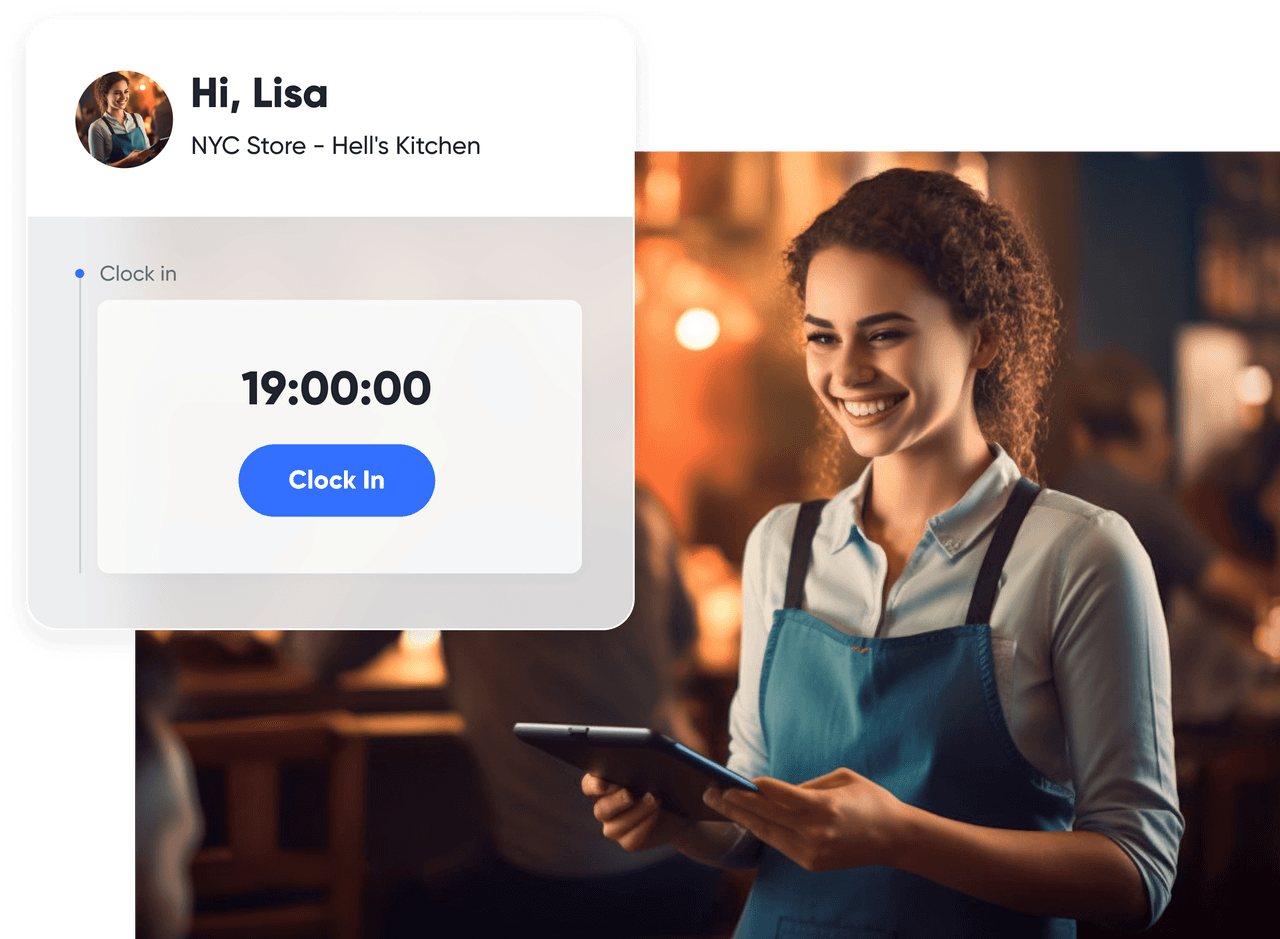Operational excellence is critical for restaurants that want to provide quality food and service to customers consistently. While achieving operational excellence can be challenging, it's essential to streamline your operations, increase efficiency, and improve customer satisfaction.
In this blog, we'll cover four starting practices that help you streamline operations for your restaurant and achieve faster growth.
1. Ditch pen and paper as early as possible.
While more restaurants adopt online orders, digital waitlists, and tablets, pen and paper are still widely used and slow down daily operations.
For example, after food inspection results are written on paper, regional store managers might need to summarize results form by form, and spend extra time understanding what the notes mean when store staff might describe the same issues differently.
What we recommend: leverage mobile phones for frontline work
Replace your pen and paper with a mobile-friendly form that helps you collect and summarize information on store operations instantly. A paper form for daily inspections can be converted into an online form in a few clicks, where store areas, items to check, and issue categories are predefined for store staff to easily fill in the information with consistency.
Here is the better part: you can directly use the data to generate reports and dashboards, then review and follow up with the store team faster.

2. Reduce repetitive work.
Daily grind at a store is not only a waste of time, but also a waste of business opportunities. A store manager might spend an hour calling every store member just to get the shift right, while the time could be used to finish business plans for the next quarter, or review the sales forecast and order more supplies.
What we recommend: automate your operational routines
Spending a few minutes creating automation on your work platform goes a long way - your store teams' time can then be used on more value-add work, such as serving customers, taking more orders, and more.
For instance, instead of using Excel sheets to record and adjust shifts, consider automating your shift management and notifications. Clock in/out, shift change request, shift confirmation, and payout can be processed automatically. This helps reduce potential errors in communication and lower the chance of getting a missed shift. [🍺 Get in line here to see and use our latest shift management template!]

3. Create a unified source of truth.
When you expand your food and beverage business across locations, inconsistencies hurt not only operational excellence but also revenue. The same boba tea tastes different across different stores as every store team gets a different version of your recipe, and your loyal customers might start drifting away after several tries.
What we recommend: digitize your handbooks and recipes
Make the latest version of your store operational guidelines easily available, which helps unify the standards used and reduce potential reworking caused by outdated guidelines, especially when you have multiple locations to operate.
We recommend creating written guidelines for your business, and maintaining all of them using online documents that can be accessed directly on employees' mobile phones. This helps you easily make edits and share with your employees without spending extra on printing and correcting. Your frontline teams no longer need to refer to a printed recipe handbook that might have been outdated.
4. Invest in training your store staff.
You can have the best processes, guidelines, and tools in place; however, your store staff's execution decides your operational efficiency, and not knowing how to leverage your assets will only lead to confusion. An untrained cashier who does not know how to use the new POS system might delay customer check-out and create frustrations for customers.
What we recommend: make training accessible and on-demand
When you have more than one location to manage, it is important to maximize the effect of your living training session. In addition to using an online meeting solution to host training across multiple stores, you can consider recording and sharing them with all your employees for those who can not join in real-time to catch up.
In addition, you can get the training transcripts, related docs, and other reference materials ready to share together with the recording to add more context when employees choose to go on-demand. This way, even your new store staff can start their first day like a pro, minimizing time needed to ramp up.

Conclusion
In conclusion, the key to fueling operational excellence for your food and beverage business lies in digitizing your restaurant operations, with mobile-friendly tools, automated processes, unified operational standards, and accessible trainings for your frontline teams. This will be an ongoing process that requires continuous improvement, proper goal setting, and performance evaluation.
Using a platform like Lark, restaurants can implement these best practices to make the best use of the frontline teams' time, enhance the guest experience, and increase the quality of their food and service for growth. Interested in seeing it in action? Request a customized demo today to unlock the magic. 🪄
Table of Contents
















